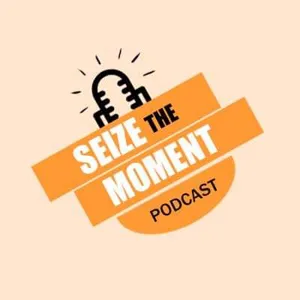Podcast Summary
Impact of Solitary Confinement on African American Men: Solitary confinement disproportionately affects African American men, leading to radicalization and long-term psychological damage. Critics question its use, and researchers continue to study its effects.
Solitary confinement in prisons, while intended to manage difficult inmates or those found guilty of heinous crimes, has raised concerns due to its psychological and financial costs. The story of George Jackson, a man sentenced to an indeterminate term after pleading guilty to armed robbery, highlights the disproportionate impact of such sentences on African American men. Jackson's experience of being denied parole and radicalized in prison led him to write best-selling letters articulating his revolutionary politics and the problems with the indeterminate sentence system. Today, both liberals and conservatives question the practice of long-term solitary confinement, and researchers like Karamit Rider continue to study its psychological effects. The few ways for families and loved ones to communicate with inmates in solitary confinement, like the woman in the radio show example, underscore the importance of understanding the human impact behind the prison walls.
The 1970s California prison violence influenced the creation of solitary confinement units: The fear and chaos of prison violence during the 1970s led to the justification and implementation of long-term solitary confinement units in US prisons, with a former critic of the system, Carl Larson, taking the lead in designing one of the first facilities.
The violent incidents in California prisons during the 1970s, including the death of George Jackson and the Attica revolt, significantly influenced the justification and implementation of long-term solitary confinement units in the US prison system. Prison officials, including Carl Larson, saw these incidents as justifications for creating such facilities to protect both prisoners and guards from further violence. Despite starting his career as a critic of the system, the interview with Larson provided insight into the fear and chaos experienced by guards during this time, leading him to understand the rationale behind the construction of these facilities. Despite not being an expert in the field, Larson, a prison administrator, took the lead in designing one of the first long-term solitary confinement supermax facilities in California.
Modern Prison Design: Easy Cleaning and Supervision: Design of Pelican Bay Prison facilitates easy cleaning and supervision, but disproportionately affects racial minorities with overrepresentation of African Americans and Latinos in solitary confinement.
Pelican Bay Prison's design, with large blocks of poured concrete cells, allows for easy cleaning and supervision, creating a modern version of the panopticon. The cells themselves are small, self-contained spaces with a concrete bed, desk, and toilet, sometimes with access to a TV or radio. However, solitary confinement is not limited to the "worst of the worst," and there are disproportionate racial impacts, with African Americans and Latinos being overrepresented due to targeted isolation of gang members. Despite limited research on the topic, patterns suggest that prisoners are being isolated based on their status rather than specific rule-breaking.
Mental health challenges in solitary confinement: Historical closure of mental institutions and increased incarceration rates contribute to mentally ill individuals being housed in prisons and isolated, resulting in a vicious cycle of isolation worsening mental health issues and longer stays in isolation, with experiences of time in isolation leading to disorientation, hallucinations, and hearing voices.
People who end up in solitary confinement often face significant mental health challenges. This is due in part to the historical closure of mental institutions and the subsequent increase in incarceration rates, leading some mentally ill individuals to be housed in prisons and ultimately isolated. The result can be a vicious cycle, with isolation exacerbating mental health issues and mental health issues leading to longer stays in isolation. The description of solitary confinement in pop culture, such as in the TV show Orange is the New Black, often accurately portrays the disorienting effect of time in isolation and the potential for hallucinations and hearing voices. These experiences can make the already difficult conditions of solitary confinement even more unbearable.
Engaging with diverse perspectives for effective reform: To effectively reform contentious issues like solitary confinement, engage with individuals from all sides, maintaining analytical objectivity while holding strong views, and understanding their perspectives can lead to better solutions.
Effective reform in contentious issues like solitary confinement requires an open-minded approach that incorporates diverse perspectives. As a researcher and advocate, maintaining analytical objectivity while holding strong views can be challenging. However, engaging with individuals from all sides of the issue, including prison officials, can lead to a better understanding of their perspectives and facilitate reform. Prisoners in solitary confinement often miss simple things we take for granted, such as seeing the moon or experiencing human touch. To cope with the isolation, they develop strict routines, like waking up early and doing repetitive exercises, which help them manage their time and maintain a sense of control. These routines contribute to their survival in the harsh conditions of solitary confinement.
Maintaining Well-being in Solitary Confinement: Prisoners in solitary confinement create routines for physical, mental, and emotional health. Coping mechanisms can last beyond release.
Prisoners in solitary confinement adopt intense routines to maintain physical, mental, and emotional well-being. These routines often include rigorous exercise, learning new skills, and creative expression. Prisoners find ways to tailor their environment and even help each other, forming a sense of community. Despite the harsh conditions, these coping mechanisms can linger long after release. It's important to note that not all prisoners in solitary confinement are violent or dangerous, but for those who are, the length of their isolation is a crucial point of analysis. Some prisoners in isolation are dangerous, but the focus should be on finding alternatives to prolonged isolation to ensure the well-being and rehabilitation of all incarcerated individuals.
The high cost of solitary confinement and its reform: Solitary confinement, which costs $90,000 per year per prisoner, is facing scrutiny and calls for reform due to its high cost and social implications. Prison officials and legislators are initiating reforms, releasing notorious prisoners with surprising success, and focusing on alternatives.
The practice of solitary confinement, which is extremely expensive and costs approximately $90,000 per prisoner per year in contrast to $45,000 for general prison population in states like California, is facing increasing scrutiny and calls for reform from both liberal and conservative perspectives. This astronomical cost, combined with the social costs of releasing prisoners from isolation, has led many to question the effectiveness and morality of this practice. Even some of the most notorious prisoners have shown surprising success after being released. With 95% to 98% of all prisoners eventually getting out of prison, the conversation around alternatives to solitary confinement is gaining momentum and crossing political lines. Prison officials and legislators in many states are initiating reforms, and the economic and social costs are driving this change.
Men leaving traditional male jobs for pink collar ones: Men face challenges transitioning to pink collar jobs, historically seen as feminine, due to societal norms and stereotypes.
In today's rapidly changing economy, traditional gender roles in the workforce are shifting. Blue collar jobs are disappearing, and pink collar jobs are becoming more prevalent. This transition can be particularly challenging for men who have had to leave manufacturing or other male-dominated industries to take up jobs in fields like healthcare or education, which have historically been seen as feminine. The NPR team is currently working on a show that aims to explore these issues and would love to hear from men who have made similar career changes or have been hesitant to do so. If you have a story to share, please call and leave a message at 661-772-7246. That's 661-77-BRAIN.





